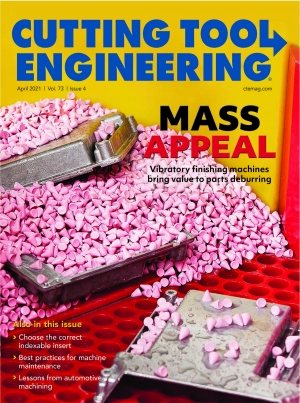By David L. Chandler, MIT
Advanced metal alloys are essential to modern life. But creating them for specific uses, with optimized strength, hardness, corrosion resistance, conductivity and so on, has been limited by fuzzy understanding of what happens at the boundaries between the tiny crystalline grains that make up most metals.
When two metals are mixed, the atoms of the secondary metal might collect along these grain boundaries or spread out through the lattice of atoms in the grains. The overall properties of the material are determined largely by the behavior of these atoms, but until now there has been no systematic way to predict what they would do.
Using a combination of computer simulations and a machine-learning process, researchers at Massachusetts Institute of Technology have found a method to produce the kinds of detailed predictions of these properties that could guide the development of alloys for a wide variety of applications.

Researchers have found a way to predict the properties of metal alloys based on reactions at the boundaries between the crystalline grains of the primary metal. In this image, colored dots indicate the likelihood that atoms will collect along these boundaries rather than penetrating them. Image courtesy of MIT researchers
Christopher Schuh, professor of materials science and engineering, said understanding the atomic-level behavior of polycrystalline metals, which account for the vast majority of metals used, is a daunting challenge. Whereas the atoms in a single crystal are arranged in an orderly pattern so the relationship between adjacent atoms is simple and predictable, that’s not the case with the multiple tiny crystals in most metal objects.
“You have crystals smashed together at what we call grain boundaries,” he said. “And in a conventional structural material, there are millions and millions of such boundaries.”
These boundaries help determine material properties.
“You can think of them as the glue holding the crystals together,” Schuh said. “But they are disordered. The atoms are jumbled up. They don’t match either of the crystals they’re joining.”
He said this means that there are billions of possible atomic arrangements compared with just a few in a crystal. Alloy designers usually skip over the problem or look at the average properties of grain boundaries as if they’re all the same.
The research team approached the issue by examining the actual distribution of configurations and interactions for a large number of representative cases and then used a machine-learning algorithm to extrapolate from these cases and provide predicted values for a whole range of possible alloy variations.
In some cases, the clustering of atoms along grain boundaries is a desired property that can enhance a metal’s hardness and resistance to corrosion, but this sometimes leads to embrittlement. Depending on the intended use of an alloy, engineers try to optimize the combination of properties.
For the study, the team examined over 200 combinations of a base metal and an alloying metal based on combinations that had been described in the literature. Researchers then simulated some of the compounds to study grain boundary configurations. These were used to generate predictions using machine learning, which were in turn validated with more focused simulations. The machine-learning predictions closely matched the detailed measurements.
As a result, researchers were able to show that many alloy combinations that had been ruled out as unviable in fact were feasible. The database compiled from this study, which is available in the public domain, could help anyone working on designing alloys.
Related Glossary Terms
- alloys
alloys
Substances having metallic properties and being composed of two or more chemical elements of which at least one is a metal.
- corrosion resistance
corrosion resistance
Ability of an alloy or material to withstand rust and corrosion. These are properties fostered by nickel and chromium in alloys such as stainless steel.
- embrittlement
embrittlement
Reduction in the normal ductility of a metal due to a physical or chemical change. Examples include blue brittleness, hydrogen embrittlement and temper brittleness.
- hardness
hardness
Hardness is a measure of the resistance of a material to surface indentation or abrasion. There is no absolute scale for hardness. In order to express hardness quantitatively, each type of test has its own scale, which defines hardness. Indentation hardness obtained through static methods is measured by Brinell, Rockwell, Vickers and Knoop tests. Hardness without indentation is measured by a dynamic method, known as the Scleroscope test.







